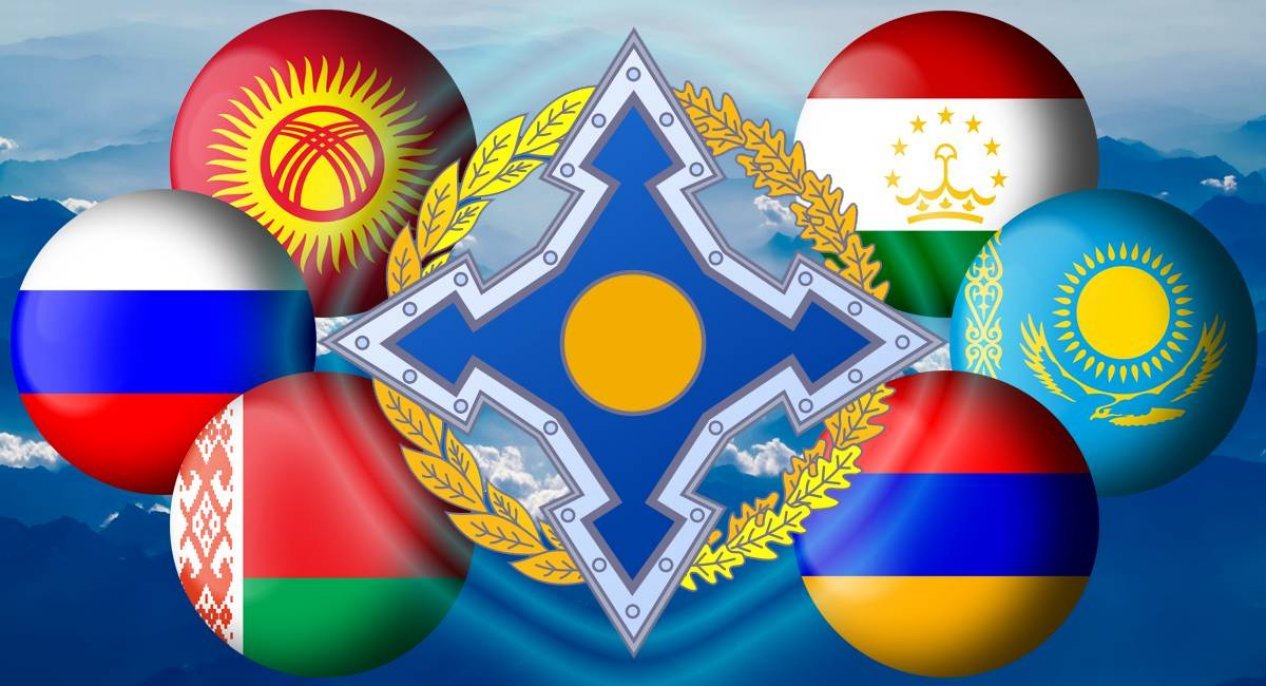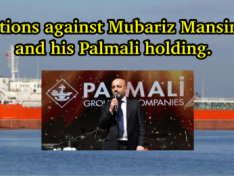
At the request of Kazakh President Kassym-Jomart Tokayev, a contingent of the CSTO armed forces has been sent to this country. Basically, these are Russian military personnel. As follows from the official statement of the CSTO, the president of Kazakhstan views the situation as “an invasion of bandit formations trained from abroad” and asked for military assistance.
According to official figures, the total strength of the CSTO peacekeeping force is about 3,600 people. These contingents are intended to participate in the CSTO peacekeeping operations. For the recruitment of peacekeeping forces, the member countries of the organization, in accordance with their national legislation, allocate peacekeeping contingents on a permanent basis.
The Russian Armed Forces have a separate peacekeeping brigade, which is part of the Central Military District, it is deployed in the Samara region. The servicemen were sent by the Russian Federation, Belarus, Kyrgyzstan, Tajikistan and Armenia.
Rallies against the sharp rise in prices for liquefied gas began in Kazakhstan on January 2 in Zhanaozen (a city in the Mangystau Province, in the south-west of Kazakhstan). They then escalated into massive protests across the country with economic and political demands. Since January 4, protesters clashed with security forces in Almaty and practically throughout the country. There are casualties on both sides. A state of emergency has been introduced throughout the country.
At this stage, Prime Minister of Armenia Nikol Pashinyan is the chairman of the CSTO Collective Security Council. The statement issued on his behalf says: “In connection with the appeal of Kazakh President Kassym-Jomart Tokayev and in view of the threat to national security and the sovereignty of Kazakhstan, among other things, by outside interference, the CSTO Collective Security Council in accordance with Article 4 of the Collective Security Treaty has made a decision to send the Collective Peacekeeping Forces of the CSTO to Kazakhstan for a limited period of time in order to stabilize and normalize the situation in this country.”
In Armenia itself the decision to send Armenian military personnel to Kazakhstan is perceived ambiguously. The point here is not at all that there is indignation, for example, by interference in the internal affairs of another state. Many residents of the country ask the question: why didn’t CSTO send troops to Armenia during the war with Azerbaijan?
Faktyoxla Lab. has tried to find out, firstly, how justified the claims of Armenians are regarding the inaction of the CSTO during the Second Karabakh War, and secondly, how legal and whether the entry of troops into Kazakhstan corresponds to the charter of this organization.
As for Armenia, let’s start with the fact that during the July events on the Tovuz direction of the state border in July 2020, Armenia applied to the CSTO and expected the organization to intervene. Former Armenian Foreign Minister Zohrab Mnatsakanyan then had a telephone conversation with CSTO Secretary-General Stanislav Zas.
Mnatsakanyan presented to Zas “detailed information on violations of the ceasefire by the Azerbaijani Armed Forces on July 12 of this year with the use of artillery fire in the direction of the Tavush region of Armenia, on the resumption of these actions in the morning of July 13, as well as on the consequences of further aggravation of the situation. The foreign minister stressed the unacceptability of such actions in relation to the CSTO member state.”
In this regard, an emergency meeting of the CSTO Permanent Council was scheduled for July 13. However, it never took place.
An emergency meeting of the Permanent Council of the Collective Security Treaty Organization in connection with the aggravation of the situation on the Armenian-Azerbaijani border has been postponed for consultations on the format in which the situation will be discussed, CSTO spokesman Vladimir Zainetdinov told RIA Novosti.
Commenting on the fact that the meeting was not held, Russian military political expert Pavel Felgenhauer said that no country in the CSTO would interfere in this conflict. “Kazakhstan, Kyrgyzstan, Belarus will send an army against Azerbaijan? Never! Under no circumstances can this be. As for Russia, yes, Russia is present in the region. There are Russian troops in Armenia. However, it isn’t in the interests of Russia to interfere in the Armenia-Azerbaijan conflict.... This is evidenced by the fact that at first an emergency meeting of the CSTO was convened, and then postponed indefinitely. Nobody can force either Russia or other CSTO members to fight against Azerbaijan. An emergency meeting of the CSTO was also adopted in Moscow. This shows that Armenia is currently in isolation. The entry of the militarized CSTO into this conflict is not in the interests of the member states of the organization.”
Further, Armenia turned to the CSTO during the 44-day war. And then they explained to the country that military actions are taking place on all the recognized territory of Azerbaijan and do not pose any threat to Armenia.
For the third time, Armenia applied to the CSTO in May last year. The point is that on May 12, within the framework of clarifying the border, the Azerbaijani side took up positions near Lake Garagol, located on the border of the Lachin region. Yerevan accused Azerbaijan of aggression, claiming that this territory is Armenian. Then Armenian Prime Minister Nikol Pashinyan appealed to the CSTO and the leaders of the organization’s member states with a request to intervene in the situation. During this period, Baku issued a statement on this issue and clarified the situation at the border. The press service of the Foreign Ministry said that the border forces of Azerbaijan are deployed in positions located on Azerbaijani territory. The Azerbaijani Foreign Ministry recommended that Armenia accept the reality of the regime of the interstate border in the Zangilan, Gubadli, Lachin and Kalbajar districts and wouldn’t escalate the situation in the region.
Likewise, the Russian side, as a member of the CSTO, stated that it sees no reason for exacerbating emotions. Russian Foreign Minister Sergei Lavrov spoke about the need to begin demarcation and delimitation of borders. He stressed that for this purpose, Moscow came up with an initiative to create a joint Azerbaijani-Armenian commission. In fact, Moscow thereby clarified that the point is in the demarcation and, therefore, it doesn’t agree with the claims of Yerevan.
CSTO Secretary-General Stanislav Zas told reporters that the aggravation of the situation in southern Armenia is a border incident and doesn’t fall under the provisions of the CSTO charter on collective defense: “It should be understood that the potential of the CSTO is used only in case of aggression, attack (on one of the member countries). Here we are dealing, in fact, with a border incident.”
Thus, they made it clear to Armenia that one should not count on the appearance of CSTO forces on the border. So, Pashinyan’s statements have no real basis. The fact is that the state border between Azerbaijan and Armenia was not agreed then and now. There is no documentary evidence that Azerbaijan violated the Armenian border and invaded its territory. It was border disputes, not aggression, and therefore the CSTO refrained from interfering.
It is also worth paying attention to the non-interference of the CSTO in the border conflict between two members of the organization - Tajikistan and Kyrgyzstan - in 2021. Then the CSTO refrained from military intervention, it didn’t act as an arbiter, and preference was given to diplomatic ways to eliminate tension.
Now let’s try to understand how legal is and whether the introduction of troops into Kazakhstan corresponds to the charter of this organization.
This is the first time in the history of the CSTO when the organization sent collective troops to one of the member countries. The question of the legality of this step arose among many politicians, experts, public figures and ordinary people in many countries of the world, because the CSTO Charter allows mutual assistance of member countries only in the event of external aggression. Article 4 of the Collective Security Treaty states that if one of the participating states is subjected to aggression (an armed attack threatening security, stability, territorial integrity and sovereignty), then this will be considered by the participating states as aggression (an armed attack threatening security, stability, territorial integrity and sovereignty) for all states - parties to this Treaty.
As can be seen, the tasks and powers of the organization are specifically defined. The participating countries can provide military support only if the territory of one of them is under armed attack.
By the way, now Washington ‘has questions’ about the legality of the request of the Kazakh authorities to deploy CSTO forces in the country. The US Department of State also hopes to receive a response from the Kazakh authorities, which prompted the need to bring the CSTO peacekeeping contingent into the country.
The European Union called on Russia to respect the sovereignty and independence of Kazakhstan against the background of sending airborne troops to the republic. The European Commission called on all parties to exercise restraint. The UN considers it important that the security forces defend the rights of the people to demonstrate peacefully.
However, the first deputy chairman of the Committee for CIS Affairs, Eurasian Integration and Relations with Compatriots of the State Duma of the Russian Federation Konstantin Zatulin told RIA Novosti: “Yes, there were no other such cases. The CSTO Charter did not formally have such goals and objectives as to help restore order in the country. But in the 2000s, after the Charter was amended, a record appeared, according to which it is possible to appeal to the CSTO from the authorities of the participating country for help in restoring order in the event of internal destabilization. It is on this basis that the operation is now being carried out.”
However, we haven’t found any amendment to the CSTO Charter, which would directly justify the legality of sending the CSTO collective forces to Kazakhstan.
On the contrary, Article 3 of the Charter notes that the goals of the Organization are the strengthening of peace, international and regional security and stability, the protection of the independence, territorial integrity and sovereignty of the member states on a collective basis, in the achievement of which the member states give priority to political means.
In addition, not a single fact of military intervention on the territory of Kazakhstan has yet been recorded. That is, it turns out that in reality the CSTO is just a pretext for suppressing internal unrest in the countries that are part of this organization. For some reason, the official authorities of the countries participating in this organization decided to call the contingent in Kazakhstan peacekeeping. How justified and legitimate is this name and the very intervention of foreign armed forces in the Kazakh conflict? According to the practice established in the UN and other international organizations, peacekeepers are sent to the zones of regional conflicts, as a rule, in agreement with all parties to the conflict. An exception can be made in the event of mass deaths of civilians, in order, for example, to stop the genocide of a particular tribe (Rwanda, Burundi) or to stop bloodshed. In such cases, a peace enforcement or humanitarian operation is carried out. The decision to use military force in a particular conflict is taken by consensus by all permanent members of the UN Security Council. So far, everyone has only heard the appeal of the Kazakh president to the CSTO with a request for military assistance. As an excuse or pretext for the introduction of foreign troops into the territory of his country, he called the insurgent residents terrorists and pointed out some hypothetical connection with foreign forces. The president did not disclose this thesis and one can only guess what he meant. It turns out that the power structures of Kazakhstan took a neutral position in the internal conflict between the rebels and the authorities, or even partially sided with the rebels. Then the foreign military of the CSTO turn into interventionists who have arrived to support the authorities.
“The people who are going to cleanse the rebellious population of the city are not peacekeepers, but at best a military-political operation, and at worst a military intervention. Until there is at least some kind of reassurance and understanding and where peacekeepers can stand between the conflicting parties, these are not peacekeepers, but interventionists who can be invited by the legitimate government,” says Alexander Baunov, editor-in-chief of Carnegie.ru.
An intervention is a military, political, informational or economic interference of one or several states in the internal affairs of another state, violating its sovereignty. Intervention can be military (one of the forms of aggression), diplomatic, informational, economic and many other types. All types of intervention are incompatible with the UN Charter and are prohibited by international law.
According to some experts, the CSTO should help its member states defend their territory from outside attacks. But the CSTO should not be a police force, this is unacceptable.
Well-known Soviet and Russian journalist Andrei Karaulov sharply condemned the introduction of a Russian contingent of troops in order to suppress unrest in Kazakhstan. The journalist compared the entry of troops into Kazakhstan with the bloody invasion of Soviet troops in Baku. In his program on Youtube, Karaulov notes that Russia and other CSTO countries, according to the agreement, didn’t have the authority to send troops to Kazakhstan. The CSTO treaty states that countries can help each other only in the event of external aggression.
“You need to understand that they are not bringing in the Russian Guard, but the paratroopers. In the same way as in January 1990 the paratroopers entered Baku. We remember Bloody January. Then in Baku the paratroopers of General Lebed stabbed with bayonets and drove in armored personnel carriers through ordinary residents of the city. An infant and a 92-year-old man became their victims. All the victims of our paratroopers are buried in the Alley in Baku. By the way, President Putin came there and laid flowers at the graves of the victims. Lebed’s paratroopers were saving the then leader of Azerbaijan Vezirov,” he said.
In the opinion of the former co-chair of the OSCE Minsk Group from the US, Matthew Bryza, in order to understand how legal was the introduction of the CSTO peacekeepers into Kazakhstan, it’s necessary to study the specifics of the CSTO charter clauses.
In accordance with the charter, if an act of aggression is committed against any of the participating States, all other participating States undertake to provide the necessary assistance, Bryza reminded.
"Thus, a legal obligation takes the form of a contractual one in the form of assistance to another participating country in the event of an external threat. The events in Kazakhstan are an internal affair of this country, while the CSTO intervention from a political point of view is difficult to justify," he said.
According to him, people in Kazakhstan talk about external aggression and a terrorist threat to justify the intervention of the CSTO.
"However the CSTO made a decision to bring peacekeepers to Kazakhstan based on the request of President Kassym-Jomart Tokayev," he emphasized.
The former ambassador stressed that the intervention of the CSTO forces in Kazakhstan and the bloody events of January 20, 1990 in Baku have some common features.
"The introduction of combat units of the USSR army in Baku was approved by Moscow to suppress large-scale demonstrations of the popular masses. In the case of Kazakhstan, the intervention is carried out by the CSTO bloc," concluded Bryza.
Finally, expert of the national anti-terrorist committee, veteran of the Vympel special unit, writer Valery Kiselev, spoke about the situation “CSTO in Kazakhstan”: “Russian troops will need to be withdrawn from Kazakhstan immediately after they help calm the situation.” He stressed that the long stay of Russian troops in Kazakhstan will heat up relations between the two countries.
Kiselev compared military units with a scalpel, which can be used to perform both a complex surgical operation and cut in such a way so that then the blood cannot be stopped.
Considering the above-mentioned facts, we come to the conclusion that the legality of bringing the CSTO peacekeepers into Kazakhstan is questioned by many people.




















